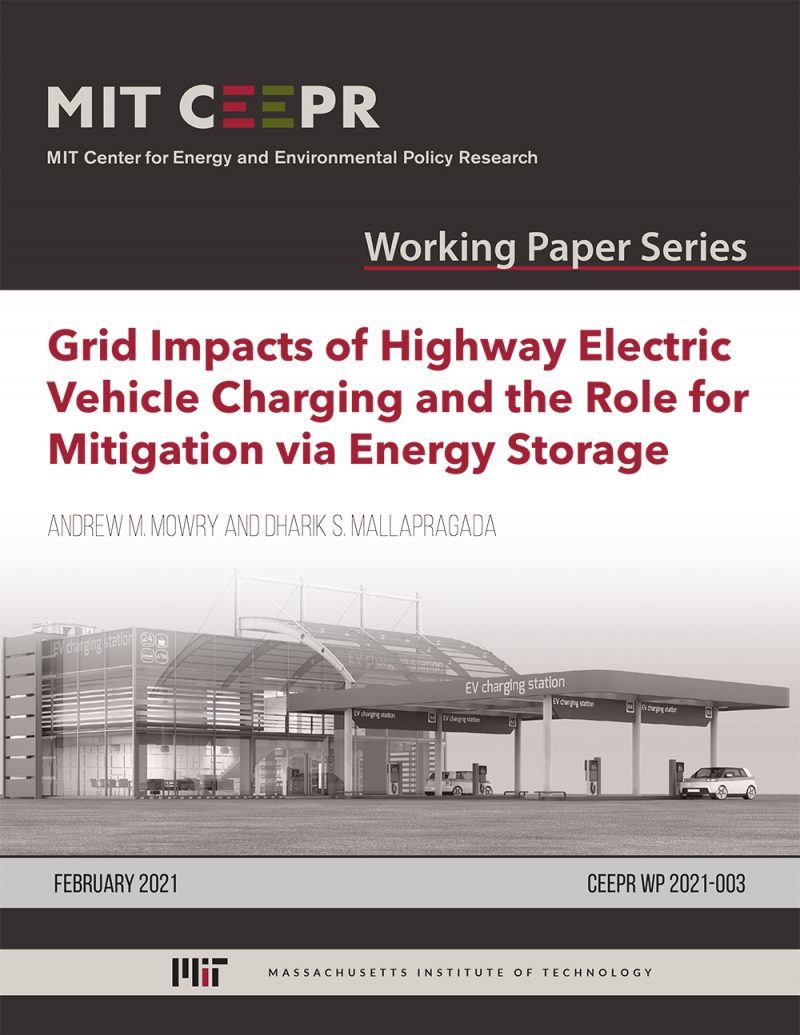Grid Impacts of Highway Electric Vehicle Charging and the Role for Mitigation via Energy Storage
Andrew M. Mowry and Dharik S. Mallapragada
February 2021
Highway fast-charging (HFC) stations for electric vehicles (EVs) are necessary to address range anxiety concerns and thus to support economy-wide decarbonization goals. The characteristics of HFC electricity demand – their relative inflexibility, high power requirements, and spatial concentration – have the potential to adversely impact grid operations as HFC infrastructure expands. Here, we use a spatially and temporally resolved grid operations model to study the impacts of scaled-up HFC infrastructure in the context of multiple EV penetration scenarios on the 2033 Texas power system. We find that grid-HFC interactions increase system average operational costs by $0/MWh to $6/MWh, with greater impacts associated with higher EV penetration. The majority of increased costs is attributable to transmission congestion on feeder lines serving a minority of HFC stations. This impact is not captured by less detailed models, and the HFC stations within this minority are not easily identified without a full simulation. Four-hour battery energy storage is shown to be more effective than demand flexibility as mitigation, due to the longer duration of peak charging demand anticipated at HFC stations. Transmission network upgrades can also effectively mitigate grid-HFC interactions, and choosing the most effective strategy for each station requires a tailored approach.



